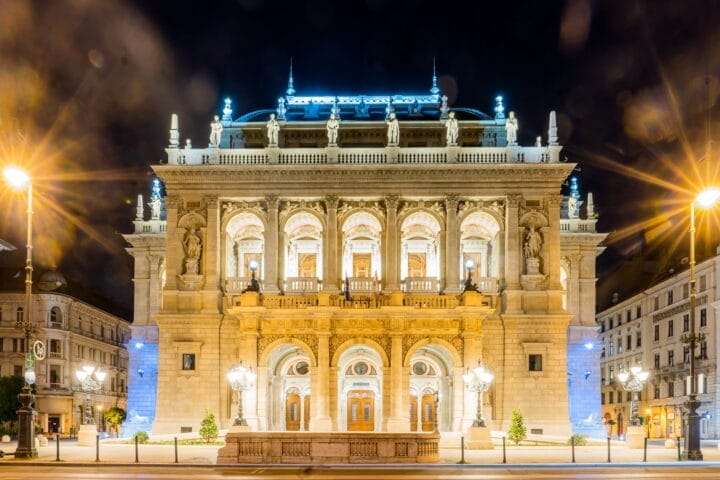If you’re looking for innovative, unique music for your listening pleasure, look no further than the groundbreaking work of Maurice Ravel.
The French composer is renowned for his lush and diverse compositions that span a wide variety of musical styles, from impressionistic to classical. He often experimented with melodic and harmonic ideas that challenged the status quo and forever changed how we perceive music.
In this article, we invite you to explore the innovative music of Maurice Ravel. We’ll take a closer look at his life and works, examine how his compositions are distinctively crafted and tell you why they continue to captivate audiences around the world. So get ready to embark on an exciting journey into the world of modern music – the world of Maurice Ravel!
Introduction to Maurice Ravel’s Music
Maurice Ravel was one of the most innovative and influential French composers of the 20th century. His musical style blended classical elements with avant-garde compositions, resulting in a unique sound that is immediately recognizable. His works often featured exotic scales, polyrhythms and daring harmonies which still make them popular today.
Ravel’s most famous works include the orchestral pieces Boléro and Daphnis et Chloé. He also composed operas such as L’heure espagnole and L’enfant et les sortilèges, as well as chamber music including his violin sonatas. In addition to his original compositions, Ravel orchestrated other composers’ works for performance in concert halls.
Ravel’s music was highly influential on classical music composers after him, including fellow French composer Claude Debussy. His works remain important part of the classical repertoire, both in live performances and recorded formats. Even those unfamiliar with Ravel’s legend have likely heard one of his most popular pieces: Boléro has been used in numerous films and television shows throughout the decades.
Exploring the Influences on Ravel’s Work
The music of Maurice Ravel was an exciting, yet complex blend of genres. His European roots, as well his inspirations drawn from jazz and popular music, resulted in a unique kind of classical music.
Ravel was heavily influenced by the Impressionist style of Claude Debussy—a style characterized by “non-realistic” effects like parallel chords and unusual timbres—and this can be heard in pieces such as the piano solo “Pavane for a Dead Princess”.
On the other hand, Ravel was also inspired by Spanish rhythms and melodies which gave his compositions a sense of vibrancy and liveliness. The Bolero, written in 1928, is perhaps his most famous piece which draws heavily from an exotic blend of genres, featuring Spanish dance rhythms with elements from jazz and classical music as well.
Developing these influences into his own style, Ravel’s works are distinctively recognizable even today, standing out among other composers thanks to this amalgamation of genres that continue to influence modern-day musicians across all styles.
Ballet Suite: “Ma Mère L’Oye”
Maurice Ravel composed a beautiful ballet suite dedicated to his mother, “Ma Mère l’Oye” (‘Mother Goose’), which was premiered in 1910. The music of this suite is some of Ravel’s best-known works, and it’s easy to see why! This collection of five perfect movements is a true celebration of the Mother Goose stories, from the opening “Danse du Rouet” (‘Spinning Wheel Dance’) to the final movement “Le Jardin Féerique” (‘The Fairy Garden’).
Ravel expertly crafted the melodies for this suite, and his creative use of traditional instruments gave it a unique sound. He also created new arrangements for popular tunes that had been used in vaudeville shows up until then. This modern interpretation of such classic tunes made it stand out and appealed to both musical traditionalists and progressives alike – elements that are still appreciated today.
The playful nature of Ravel’s music is also quite evident in “Ma Mère l’Oye”. He used simple yet magical chords that go perfectly with each other, as well as enchanting harmonies – making for quite an ethereal experience! The melody is often lighthearted, but there are moments where Ravel infuses a hint of darkness; the result being a truly remarkable collection of masterpieces.
The Famous Piano Concerto for the Left Hand
Maurice Ravel’s Piano Concerto for the Left Hand is one of his most famous works, and for good reason. Written in 1929, the work was composed for Austrian pianist Paul Wittgenstein, who had lost his right arm in World War I. Ravel’s left-hand piano concerto is a complex and beautiful piece of music that captures Wittgenstein’s strength and resilience in the face of adversity.
Ravel was no stranger to intricate composition techniques, blending dynamic instruments with traditional forms to create a unique sound. The concerto is an excellent example of this skill, featuring three movements – Allegro, Aria I, and Presto – that showcase Ravel’s mastery of both form and style. The first movement is a dramatic yet restrained Allegro exhibiting many of Ravel’s signature characteristics such as powerful chords, chromaticism and thrilling runs up and down the keyboard. The second movement is a marking pause before the final Presto which features some of Ravel’s most daring harmonic experimentation – weaving in unconventional dissonances as it builds up to an exhilarating climax.
Ravel himself called this work “a masterpiece,” and it remains one of his best-known compositions even today.
Music for Orchestra: “Bolero” and Other Hits
Maurice Ravel, who is best known for his classical compositions and inventive orchestration, is often credited as one of the fathers of modern music. Many of his compositions have gone on to become popular favorites, such as “Bolero” and “Daphnis et Chloe”.
While each of these works is often recognized for its distinctiveness, what makes them truly impressive are the innovative arrangements and orchestration he used to convey his ideas. For instance, Ravel’s robust use of brass instruments in “Bolero” and “Pavane pour une Infante Défunte” helps to create a powerful and exciting sound. He also utilizes woodwinds in a less traditional way by incorporating them into a groove-based melody line in “Le Tombeau de Couperin” that gives the song an unusual edge.
This isn’t all: he was very experimental in his composition choices as well, writing pieces such as “Mother Goose Suite” (1908) which utilized classical forms but had an atypical structure; the suite was arranged based on fairy tales instead of a conventional symphonic movement approach. Ravel also wrote pieces such as his “La Valse” (1920) which combined waltz rhythms with an ambitious instrumental palette.
Through experimentation with orchestral arrangements and composition styles, Maurice Ravel cultivated a unique style that continues to stand out from the crowd today.
Rediscovering Ravel in Modern Contexts
Though Maurice Ravel lived in the late 19th century, his music has an unmistakably modern sound. From his use of unusual rhythms and harmonies to his experimentation with blending genres, Ravel’s compositions remain as fresh and innovative today as they were when he wrote them.
Ravel’s achievements have been rediscovered and celebrated in a variety of new contexts, including movies, musicals, television shows, video games and more. Indeed, some of Ravel’s most popular works – such as Bolero – have been featured prominently in popular culture over the past few decades.
In addition to the countless reinterpretations his compositions have seen over the years, Ravel’s adventurous spirit has inspired numerous contemporary musicians to push boundaries and explore different sounds. His influence can be seen in a variety of genres ranging from classical to jazz and pop music – even heavy metal bands have covered some of his songs!
The incredible staying power of Maurice Ravel’s work is a testament to its timelessness and versatility – whether you’re an avid classical music listener or just looking for a little something extra for your next playlist or movie soundtrack, don’t hesitate to explore the innovative works of this remarkable French composer.
Maurice Ravel was one of the most influential and innovative composers of his time. His music integrates classic forms of music with modern techniques, resulting in a unique and captivating sound. Ravel’s works have been performed by orchestras around the world, and his influence is still felt today in the works of contemporary composers. Whether you’re a classical music fan or not, it is worth discovering the remarkable music of Maurice Ravel and immersing yourself in his beautiful soundscapes.










